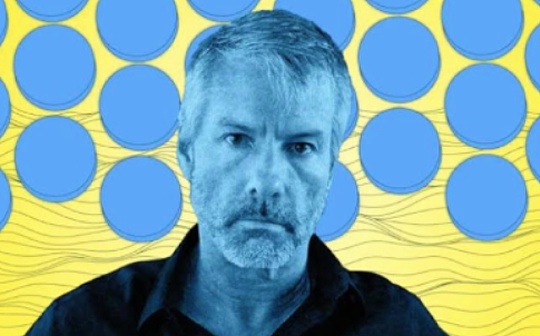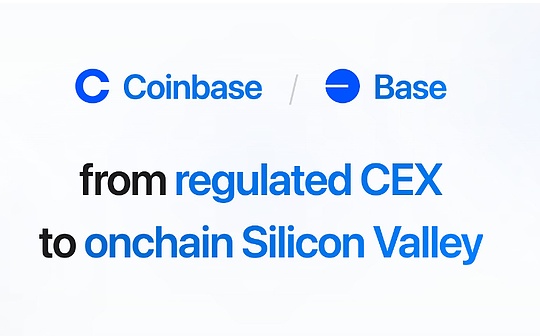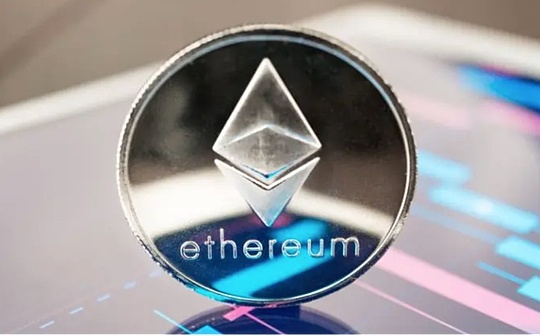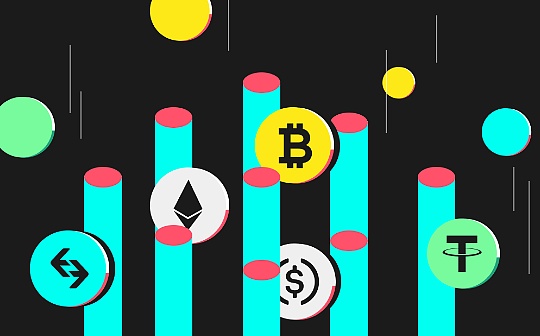
Author: Multicoin Capital; Translation: Bit Chain Vision Xiaozou
At the end of each year, we will gather together to discuss what major changes we expect in the next year.However, it is the first time to disclose these ideas.
Shayon Sengupta (Multicoin Capital Partner):
Exchanges used to trade things that are easy to pricing -stocks, commodities, interest rates, etc.There are some standardized methods to measure these assets (for example, the cash flow of stocks DCF; the current price of a barrel of oil in the border; the willingness to pay for $ 1.05 in the future).This is the significance of price discovery to the liquidity market.
However, there is a type of commodity that the price finds that the price is completely focused on attention.Sports shoes, artworks, sports collections, antique furniture -these products are lower than the liquidity of stocks or commodities. Their value is purely from social consensus, not DCF models.
In recent years, due to the influence of the Internet, the theory of value concern has penetrated into the traditional market.In this mode, TSLA, GME, AMC, DOGE, and Cryptokitties have all experienced major price discovery.In the past, the main pricing mechanisms of these assets were cash flow and settlement prices, but now, the main pricing mechanism comes from the attention they receive.
Cryptocurrencies play two important role in value attention theory: the first is the ability to quickly create new assets, and the second is the ability to trade these new assets.If the attention is the core pricing factor, then the cryptocurrency realizes an infinite extension of the canvas to issue and trade assets that can track attention.The wider “financial attention” model requires the two most important attributes of cryptocurrencies to reach its final state: no available and combined.
● No license is required:Anyone can issue any type of assets.
● Combined:Anyone can trade these assets in any place.
The experimental design space is as follows:
● Increase the surface area of new assets (for example, creators tokens, predicting market LP positions, and infinnasis).
● Embeds and transactions into new places (for example, Messenger robots like Bonkbot or Bananagun, such as Leaderboard and in -game markets like Friend.tech).
● Promote the coordination between asset holders (for example, to collect funds to purchase constitutional copies to establish radio footprints for operators to divert pressure).
The recent impact of this situation will be that the next large exchange will not look like an exchangThe community can immediately launch crowdfunding activities, raising millions of dollars to establish a network state, or like a Stack Exchange type forum. In this forum, top contributors will not only get the platform’s specific identity points, but also get the points of the platform, but also obtainMaternal economic income.
In 2024, we will see that entrepreneurs experimented along these three models.We will see the emergence of the first “non -exchange” type of “non -exchanges” types facing liquidity and non -fluidity assets.The trading volume of these exchanges will be rising on the rankings and takes over the WAA Street Bets.
Vishal Kankani (head of Multicoin Capital): NFT collector social network
In 2024, I am very optimistic about the NFT collection. More people will collect NFT, and there will be more and more attention around collectors’ social experience.
The origin of collection has a long history, from the peerless treasures collected by the kings of Egypt and China to the Renaissance of the European -Renaissance.In essence, the museum has evolved from these private collection.
Psychologically speaking, in addition to speculative opportunities, collection is also a way of self -expression.In some circles, the collection has become a symbol of identity, and the collection behavior is intertwined with personal identity, symbolizing commitment, professionalism and knowledge.The Internet enlarged this behavior, associated the previous individual enthusiasts, and cultivated a new sense of belonging in their respective circles.
Despite these progress, collectors still face some obstacles:
● Fraud related to authenticity and source
● Trading and convertible
● Safe, damage and loss
● Space and storage problems
From a design point of view, the blockchain can vigorously disintegrate the above obstacles and attract more people into the collection field.The blockchain will particularly attract the younger generations who have entered the field of digital collection, collections such as “Pokémon GO”, virtual sneakers and game skin.These collections are the predecessor of digital native collections staying on the public blockchain.
Even if digital collections are transferred from private databases to public blockchain, some of the groups of collectors will remain unchanged: show off their collection, easily exchange the collections, and find the same as the desire to interact with them.These behaviors will lay the foundation for the rise of the social experience based on ownership.
Spencer Applebaum (Multicoin Capital partner): Stable coin remittance of emerging markets
After Bitspark’s internship, I fell into the rabbit hole of cryptocurrencies.Bitspark is one of the earliest companies that use Bitcoin as a remittance channel. The business scope is mainly in Southeast Asia and Africa.Cryptocurrency -driven cross -border payment is one of the most exciting cases I found in cryptocurrencies.
In some low -income countries, the remittance industry is one of the biggest driving forces of GDP (GDP), and it is also the way of survival of many economies:

For a long time, the challenge facing remittances is high costs. Only a small number of fiat currency can be exchanged and traded outside its mother country (such as the US dollar, euro, yen, and pound), which makes many remittance channels slow and difficult to access.According to data from the World Bank, the average cost of remittances is about 6.2%, but for some long -tailed channels, this cost will increase significantly.For example, the cost of remittance from South Africa to China exceeds 25%.
In this context, I look forward to appearing in 2024: B2B SaaS (especially MTO), a remittance application for consumers and a tangible currency remittance operator (MTO) (especially in traditionally unable to access and/or expensive channelsStable currency MTO).
These products either use local payment channels to convert local currencies into USDC/USDT through P2P (such as ORAMP or El DoOorado), or send USDC to another country, or hold USDC or through familiar domestic payment channels and other brokers.Or liquidity providers are exchanged for local currencies.
In the past 12 years, digital payment has had a profound impact on global remittances:
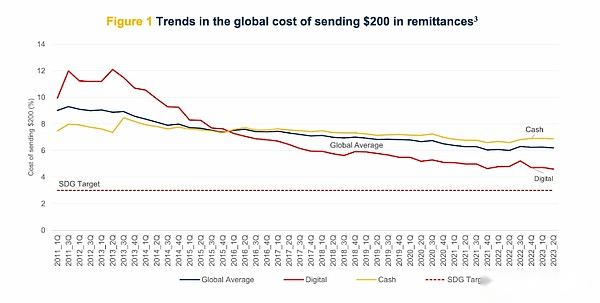
Stable coins will accelerate this trend and further reduce the cost of remittance, especially those long and expensive long -tailed channels.With the rapid adoption of stable currency in 2023, 2024 will be a year of prosperity and development of stable coins.
Matt Shapiro (Multicoin Capital Partner): Cryptocurren
In 2024, we will see a meaningful change, that is, cryptocurrencies will be converted from products to products to support products.Early signs of this situation have now been revealed and have a wide distribution.
Last year, cryptocurrencies lit a new market that was impossible or inefficient.HiveMapper created a brand new map with a position view frequency of 24 to 100 times the map of Google Street View, and drawn 10%of the world’s maps in less than a year.Contribution.In the case of global GPU shortage, the Render network has created a new market for GPU supply. We believe that in the next few years, the GPU supply field will continue to face the problem of imbalanced supply and demand.Helium Mobile is looking for infrastructure and equipment owned by users who support encryption to fundamentally change the cost structure of the telecommunications industry.
Nubank is one of the largest new banks, with more than 80 million customers. It is inclined to the use of cryptocurrencies and has released the NUCOIN tokens used for loyalty plan.Starbucks is tilting to cryptocurrencies through their Odyssey plans. The Odyssey plan is a branch of their existing top -level reward programs.Blackbird is using cryptocurrency rewards as wedges to enter the catering industry (this may be the pioneer of promoting strong payment business, adding another to the net profit of the restaurant).
Baxus is using cryptocurrencies to promote the development of transactions and investment markets of whiskey and other high -quality spirits, which are open to more new participants.ORAMP is using cryptocurrencies to open up a new market for local and regional foreign exchange to reduce differences and reduce costs for customers.
All these examples are different, but their cores are the same: they are using cryptocurrencies to provide products to support products, thereby promoting meaningful economic results.In some cases, such as Starbucks, Nucoin and Blackbird, the cryptocurrencies are mostly blurred and operated behind the scenes.In other cases, such as HiveMapper and Render, cryptocurrencies are closely related, highly visible, and are the key parts of the product itself.The design space here is very wide. The infrastructure construction has paved the way for the support of cryptocurrencies for daily use cases in the past 5 years.In 2024, experiments in this field will explode.
Eli Qian (Multicoin Capital Investment Analyst):
In 2024, I expect that the data scale on the chain will increase in order to increase.With the addition of new users, the use cases and functions of DAPP and protocols will also increase.The amount of data from decentralized social agreements will be particularly rich -people will have more activities on social products, and the amount of data generates will be more than financial products.
How do we deal with this data bang?In the past, people looked at the data on the chain through advertising and personalized perspectives.However, I eager to see the team adopt a more basic method, and realize that when building a social product, it is not just a luxury, but also a necessary.
At present, social data and identity on our chain are built in a general -purpose map (such as Farcaster), which makes it difficult to build social products for different social environment.People are multi -faceted.We live in various social environments.Different environments will shape our different behaviors and let us have different needs.We use Facebook, Twitter, LinkedIn and Snapchat to have different reasons -social maps create specific backgrounds and experiences on each platform.
The release of Threads provides case studies for this.Threads did not stifle Twitter, there are many reasons, but one of the reasons is a fuzzy social background.Threads’s social map is imported from Instagram. This is a social network. Its background is mainly related to real life.However, THREADS’s user interactive way to copy Twitter, a online first -priority is usually anonymous social environment.Because the product does not match the background, users do not know how they should act.
In 2024, the boundaries and nodes of social maps will be divided into more specific and related backgrounds.At present, the in -agreement solution has appeared (such as Channels on Farcaster), but I hope to see the outside of the agreement, because developers have begun to be more relevant to the products and social experiences they plan to build.I am excited about the next wave of data and the infrastructure of developers, and they will provide support for the new generation of social applications.
Tushar Jain
Each round of cryptocurrencies is started by a new token distribution method.For example::
● The spread of POW chain -2013/2014
● ICO -2017
● IEO -2019
● Liquidity mining -2020
● NFT casting -2021
In the nearest bear market, there are two new token distribution mechanisms that can be used as a fuel that ignites a new round of bull market:
● DEPIN—The people with token reward those who help build product -based capital assets (such as Helium, HiveMapper, Render).
● Points— Inspired people to use products before all token mechanisms play their role.Issuing tokens requires a lot of work. Once the tokens are online, it is difficult to change tokens.There are no units, no maximum supply restrictions, and because of non -transfer, the regulatory risk is small.Before forming the product market, points are an incentive method.
The new form of tokens distribution is a powerful way to attract new users to enter the encrypted ecosystem.I think the next round of users will come from encrypted assets that users make by themselves, not bought.DEPIN and points are new methods for new users who have never used encrypted wallets before.
Kyle Samani (Multicoin Capital partner): UI layer combined and client ZK (zero knowledge certificate)
(1) UI layer is combined
I discussed the synthetic concept at the Multicoin summit in 2021.At that time, I paid more attention to the combination of atoms on the chain.However, in the past few years, I have no longer paid more attention to the composable atomic on the chain (so I changed my name from “Combined Kyle” to “Integrated Kyle” on X).Recently, I am even more interested in the combination of UI layer without permission.In 2023, we saw the first major breakthrough of the UI layer: Unibot.UNIBOT is a top terminal and DEX BOT on the chain on Telegram.In the past, people will get information somewhere on the Internet (X, Reddit, News, Bloomberg, Telegram chat, etc.), and then navigate to a separate UI for transactions (such as Drift, Binance, Coinbase, etc.), and Unibot will be a trading bandOn Telegram, people have gathered, social and exchange information.
In 2024, in addition to group chats on Telegram, there will be a huge opportunity to bring trading activities into many different network environments.
Based on this idea, I hope to see more UI layers in combination, not only for asset accounts, but also to social products. The most significant is FarCaster.Farcaster’s dream is very bold: a single event Feed, each of which is signed by one person, countless UI can read data from the event Feed.
We usually discuss X, just like it provides unique product experience for different use cases: Cryptotwitter, FINTWIT, Sporttwitter, Politicaltwitter, etc.There is a real opportunity to build the Farcaster client, starting this vision from the first principle.The design space will be opened in 2024.
(2) Client ZK
In the past few years, most discussions about Zero Knowledge Certificate (ZK) have expanded asset accounts around the use of zero -knowledge Rollup and ZK collaborators.However, I think the most interesting design field of ZK is the customer’s privacy protection.I have recently paid attention to the ZK configuration of the two clients. I think it is very eye -catching:
● ZK.ME– As the name suggests, this is a system that generates your own ZK proof, especially in the context of KYC and AML compliance.If there is no more stricter chain KYC, it is difficult for me to imagine that DEFI will show a 10 -fold increase.Under such assumptions, I hope that users will not leak their data, and ZK proves that it will be the basis for achieving this vision.
● Brave BoomERANG— Traditionally, the advertising trading platform is running on the central server.This is the case for Google, Facebook and all other online advertising trading platforms.Brave is subverting the advertising trading platform model.Users run the advertising trading platform on their device and submit a certificate to the blockchain to operate the advertising trading platform correctly.This model ensures that it will not leak personal information, and can still provide advertisers with the target particle size they seek (ZK proves to ensure that Honda’s advertisements are displayed to 16 years old instead of audiences).
As these two examples show, the biggest opportunity for re -constructing trust and using ZK to build a new business model on the Internet is the client.

